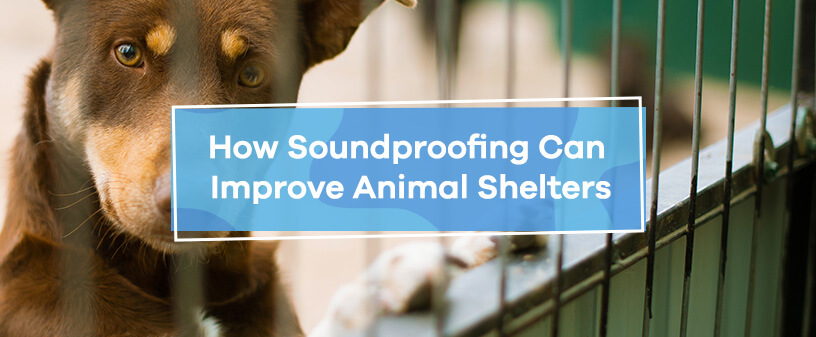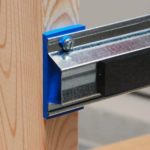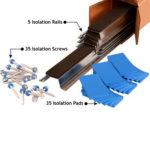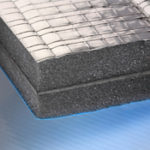
While providing dogs with a permanent home is the best option, many furry friends spend weeks, months or years in a rescue shelter waiting to find their new best friend.
Most animal shelters do everything they can to make kennels pleasant, but the rescue shelter environment can be stressful for any dog. Animal shelter noise control methods can improve a dog’s quality of life and help improve the visitors experience.
Sources of Noise in Animal Shelters
The activity, smells, and sounds within animal shelters result in excessive barking and dogs jumping on kennel doors — both cause unwanted noise. An average dog bark can register anywhere from 60 to 100 decibels. Multiply this by dozens of dogs in a small space, and it is easy to feel overwhelmed by noise.
Other sources of noise in an animal shelter include outside traffic, workers talking, HVAC equipment, vacuums and kennel doors opening and closing.
Benefits to Animal Shelter Soundproofing
Soundproofing spaces like cages, kennels and play spaces for dogs provides pups, workers and volunteers with several benefits.
1. Reduce Dog Bark Echoing
Dogs bark for a multitude of reasons based on their reactivity, which is no fault of their own in such an unfamiliar space. Soundproofing in an animal shelter reduces the likelihood of dogs hearing each other between rooms, and people outside the facility are disturbed less by the noise.
2. Create a Calming Environment for Dogs
In many cases, excessive barking can result in dogs feeling scared or anxious. Keeping dogs in your rescue center happy and healthy is achievable by taking the time to install soundproofing materials.
Quiet environments are excellent in helping dogs feel comfortable before they find their forever homes. Reducing noises also makes it easier for pups to get sleep at night once your doors close for the evening.
3. Reduce the Chances of Hearing Damage
Prolonged exposure to sounds 85 decibels or higher can result in permanent hearing loss in humans. Dogs have more sensitive hearing, which makes around-the-clock barking a legitimate concern.
Using soundproofing materials in animal shelters is advantageous for employees, volunteers, adopting families, and dogs. Keep decibel levels to a manageable level using professional-grade solutions you can install yourself.
Animal Shelter Noise Control Methods
We will focus on noise control for rescue centers featuring multiple dog kennels. The products we mention below address reverberations and echoes that otherwise interfere with your peaceful environment. Utilize these soundproofing solutions for kennels and cages in your shelter:
- IsoTrax® Sound Isolation Systems: IsoTrax® solutions from Soundproof Cow are fantastic when your shelter is undergoing construction. Position sound control materials between drywall and supports to lower vibrational and airborne sound.
- Quiet Barrier® HD Soundproofing Composite: Rely on Quiet Barrier® HD Soundproofing Composite to line kennel walls with a soundproof barrier and 1-inch-thick acoustic polyurethane foam. This material blocks sound and mitigates vibrations.
- Quiet Barrier® Specialty Composite: This animal shelter noise control solution uses four distinct layers to diminish sound. Quiet Barrier® Specialty Composite features a heat-resistant and durable polyester outer film.
Purchase Dog Kennel Soundproofing Products From Soundproof Cow
Soundproof Cow is here to provide soundproofing and acoustic solutions for complex noise issues. Browse the effective products we recommend for dog kennels and animal shelters to accomplish your goals.
Unsure which soundproofing solutions are right for you? Complete an Acoustic Analysis form, and our representatives will explain your options.










